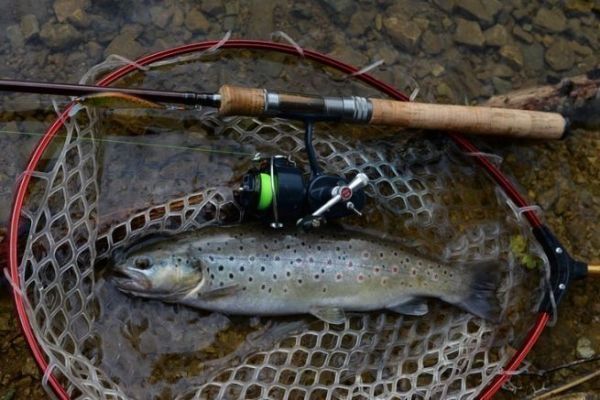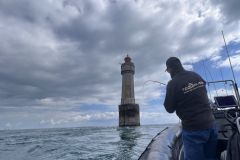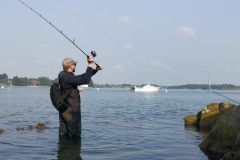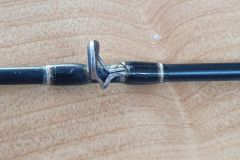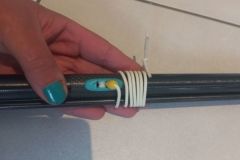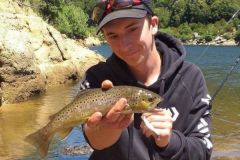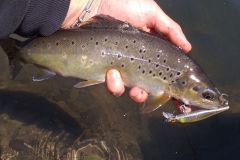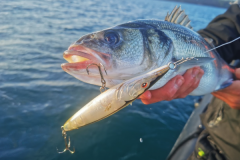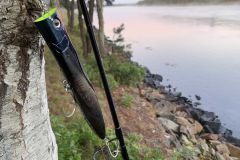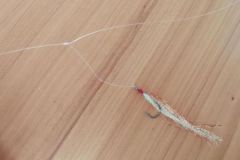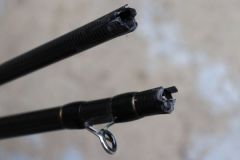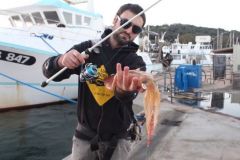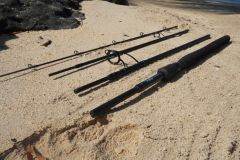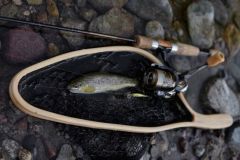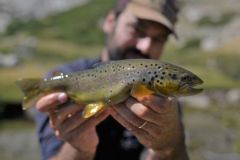Lure fishing for trout involves a vast choice of lures that must be adapted to the configuration of the spots and the size of the fish. Choosing the right trout rod for lure fishing can be a real headache. Let's see together the main rules to choose your spinning rod and get the most pleasure with the right equipment. We will not deal with casting rods, more anecdotal.
Power, the first parameter to be taken into account
The power is in a way the translation of the "strength" of the rod. It is indicated in grams and corresponds to the range of weight that the rod is able to throw properly. To this weight corresponds an anotation that explicitly defines the power:
- UL = Ultra light
- L = Light
- ML = Medium Light
- M = Medium
- MH = Medium Heavy
- H = Heavy
We will not go any further into the powers that be when it comes to lure fishing for trout.
It is also possible to find XUL rods, meaning extra ultra light, which can be found for the practice of the area (trout in reservoir) or specific to the use of micro lures for fish of modest size that are often found in small streams or torrents.
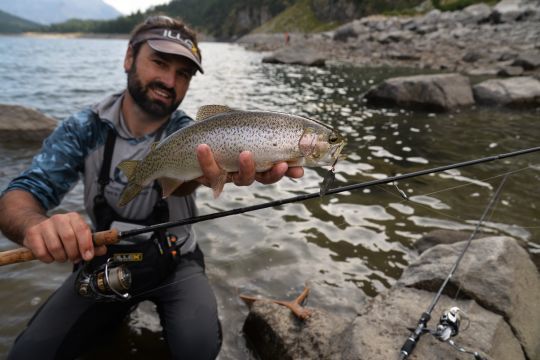
Here is a listing that includes the annotations and the corresponding weights used by a majority of manufacturers, for spinnings rods. Please note that nothing is standardized and that deviations or ranges used may differ depending on the manufacturers or the action of the rods.

The power of your rod will be dictated by the size of the fish you are fishing. And this parameter will implicitly dictate the size of the environment and the size of the lures to use. The specific search for large salmonids is often done in wide rivers with strong current, or in large lakes. Consequently, it will be necessary to adapt the weight of the lures (often heavier and larger) to fishing in these environments.
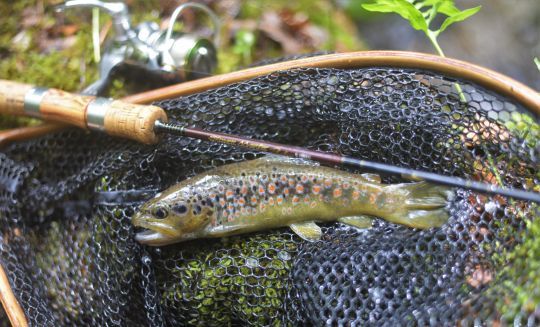
Conversely, the tracking of small salmonids in restricted or extreme environments (shallow, cold in altitude...) will require small lures, short casts and a short rod.
- Overall, xUL canes are to be reserved for approaches in reservoirs, or small torrents or streams, for salmonids whose average size is between 20 and 30 cm max.
- UL rods are to be used in mountain lakes for light fishing or in rivers and lakes mountain torrents .
- The power rods L are versatile and allow you to fish many environments. Beware of big fish, however, which must be worked properly.
- ML canes are already indicated for large salmonids, in lowland rivers or in dam lake .
- The M canes are to be used in lake or large river, especially for the use of swimming fish or soft lures .
- The MH and H canes are to be reserved for big fish in lake, but also for migratory fish which are very powerful.
Choosing the right length of the cane
The length of trout rods for lure fishing varies from 1 m 40 to 2 m 70 in general. Here again, the size of the medium will dictate the length. The wider and larger the medium, the further you will need to cast or manage long lengths of streamer.
On the other hand, you need a short and compact rod in enclosed streams where it is necessary to cast with a flick of the wrist, or on spots requiring an approach step in the forest or in crowded areas.
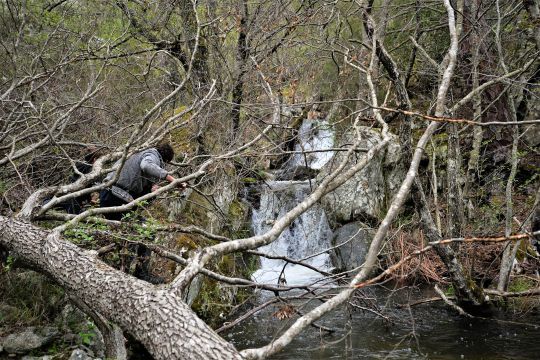
The scion and the action
There are various rod actions to perfectly match the techniques used. Be aware that the use of a specific action does not restrict the use of the rod to one type of lure.
Know how to evaluate the type of lure you are using the most to adapt the action of the rod.
- The extra fast action this type of rod has a very pronounced tip action and a stiff, nervous tip. These rods are adapted to fishing for sinking fish, which have a strong inertia and require that the energy of the angler's wrist strike is not absorbed by the rod. These rods are suitable for upstream fishing and are perfect to animate swimming fish with the rod. They can also be used for soft lure fishing, especially with shads or casting jigs in lakes.
- Peak action, fast it is an action that can be found on many models. It is the right compromise between sensitivity, precision and sensations. They allow the use of almost all types of lures. They are particularly relevant for fishing with soft lures, small swimming fish and wobbling spoons.
- Moderate (or regular) action the rod will tend to work more to the middle of the blank and not just the tip. They are adapted to light fishing with undulation, with a spinner or with the blade.
- Parabolic rods they bend to about two thirds of their length when loaded. Very common in the late 90's and early 2000's for "ultra light" fishing, they are now used only by a few anglers specializing in spinning spoon fishing. Indeed, this lure pulls and vibrates strongly in the line. You need a rod that can absorb the weight of the lure and the vibration to fish properly. They have the defect of being too "soft" and not very directive for precise fishing with swimfish or soft lure.
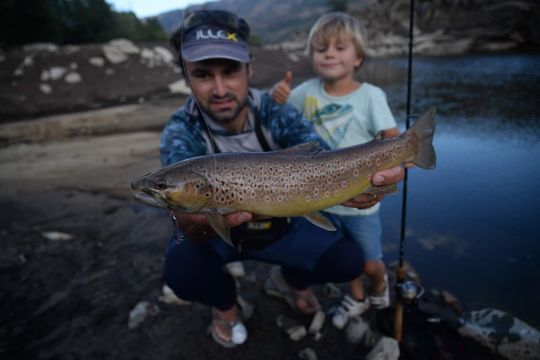
Note that there are rods with solid tips. The tip of the rod is not tubular, but solid. This offers several advantages, such as being able to make minimalist animations, to gain in sensitivity or to have a progressive action to limit tripping, especially on competition fishing or without barb.
These rods also allow you to cast and control very light lures, while having a lot of power "behind" to fight big salmonids.

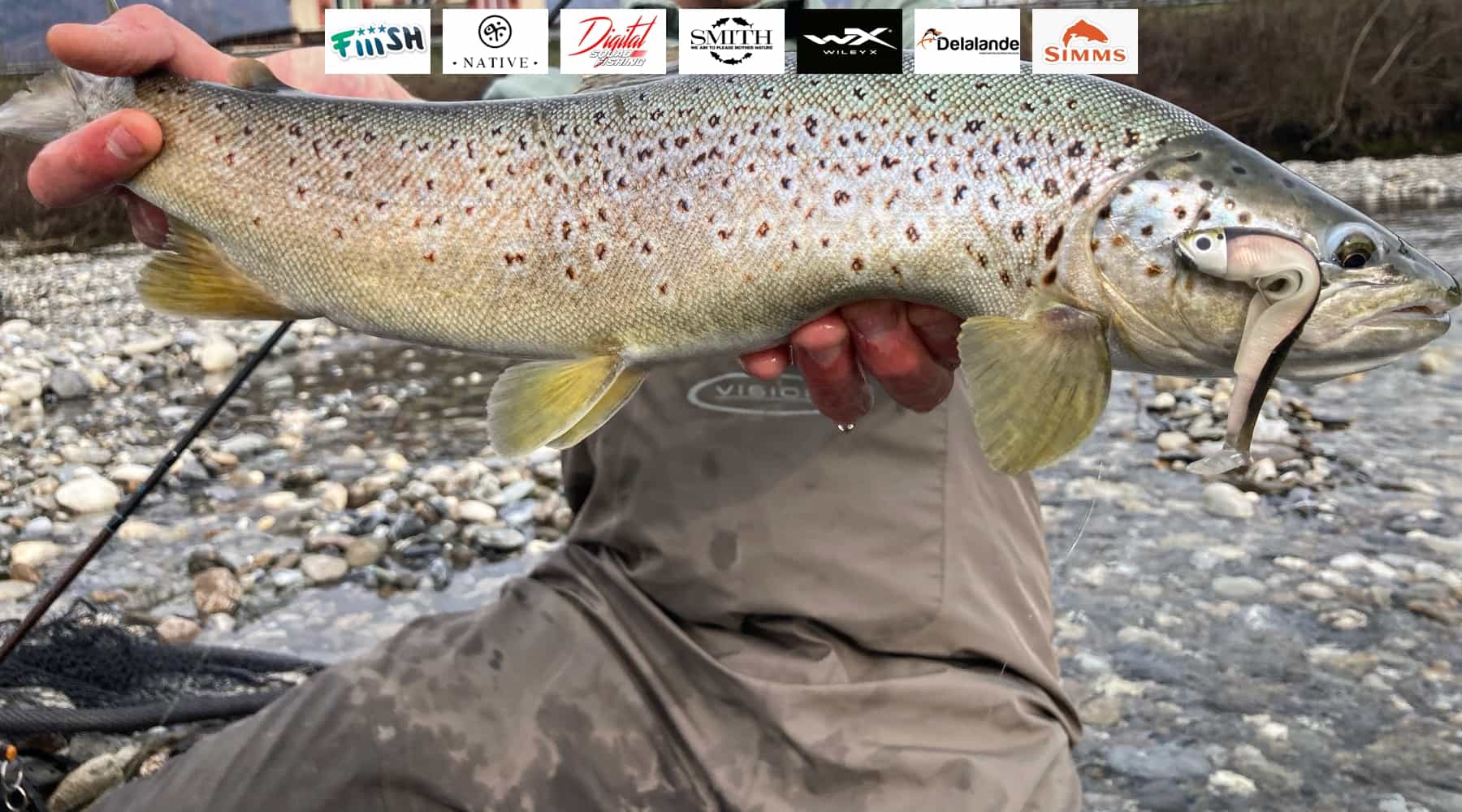
 /
/ 